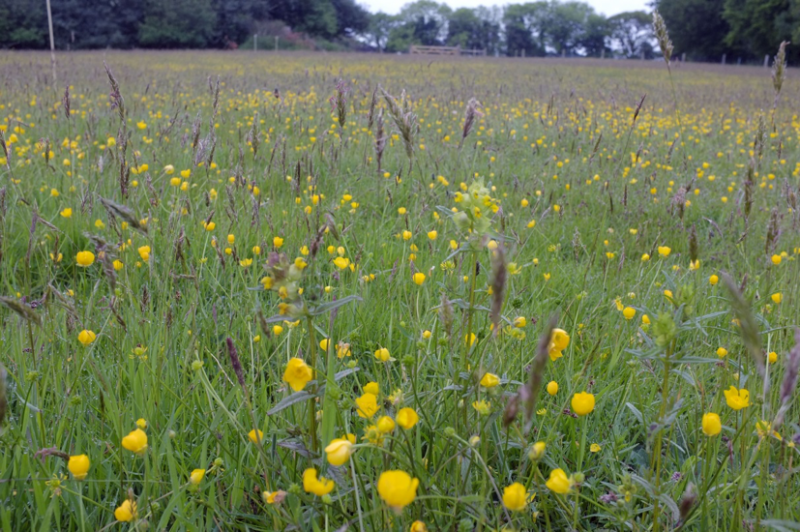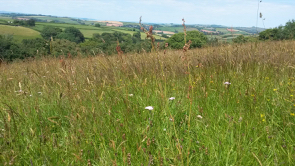Nick and Sarah Smith
Bickington, Dartmoor
A Dartmoor farm’s focus on improving soil health, sequestering carbon and ensuring its future
Our little corner of the world, a farm on the edge of Dartmoor, is a place we call home. My wife Sarah & I farm regeneratively on the edge of the moor, whilst raising children, working and studying permaculture design.

We host an apprentice in Regenerative Land-Based Systems and the farm’s focus is on improving soil health, sequestering carbon and ensuring its future
Our elevation sits between 80 and 150 metres above sea level, which gives rise to a dramatic vista on one hand and, on the other, some challenging farming terrain.
The climate here is mild, and generally warm and temperate. We sit in a microclimate to the east of the higher moor with significant rainfall. Even in the driest month there is a lot of rain. The average annual temperature is 10.1 °C | 50.2 °F. The annual rainfall is 869 mm (34.2 inches).
Our featured meadow is ‘Great Orchard’, which was once a larger field (and probably an orchard in years gone by!), now approx. 4 acres with an Ash plantation to its west (as a windbreak and for timber). It also has a restored pond for wildlife diversity and for our Ruby Devon cattle to take water from. Great Orchard was re-sown in Autumn 2006 with the objective of it becoming a diverse meadow.
There are a number of plants and flowers in and around the edge of the meadow; early purple orchids, dock, field bindweed, musk mallow, field mustard, periwinkles, self-heal, buttercups and campions.
This is now our hay field, organic, but not certified. The hay is of a very good quality and we use it to overwinter the cattle. We are no longer fertilising and we rely on the biological life within the soil and plant species to retain nitrogen and other nutrients.
We take a single hay crop towards the end of the summer, which allows a wide variety of species much needed breeding space and gives both first and second broods of swallows a little extra boost
This year, for the first time, we’re applying aerobic compost teas to the whole field. We brew them here using rainwater and, well, compost then apply with a boom sprayer, or in the garden by hand. The idea is to increase the amount of bacteria and microbes in the soil to unlock nutrients that are already present.
When we cropped this year (2022), with the weather so dry and hot, the meadow didn’t bounce back quite like it usually does. We’ll add some more pictures next summer pre hay harvest.
If you’d like to see what we get up to in the meantime we are @ourfarmsfuture

ᐧ
Other "Me and my Meadow" stories

Brian and Angela Nicholas
Mole Valley, Exmoor
An unploughed meadow with over 170 species of plant recorded

Robin and Veronica Aaronson
Ideford
A labour of love: The restoration of a previously unmanaged flood plain meadow.

Chris Chapman
Wonson, near Throwleigh
Three acres restored from a sheep-grazed pasture into a haven for wildlife.

Charlotte Oliver
South Hams
Charlotte's managing her fields as hay meadows and is rewarded with orchids, sweet hay and a host of insects, moths and butterflies.
